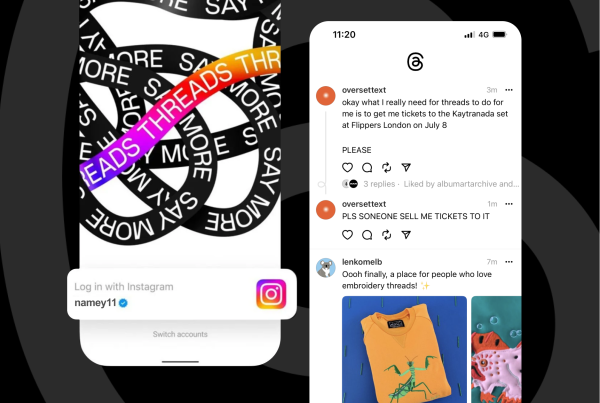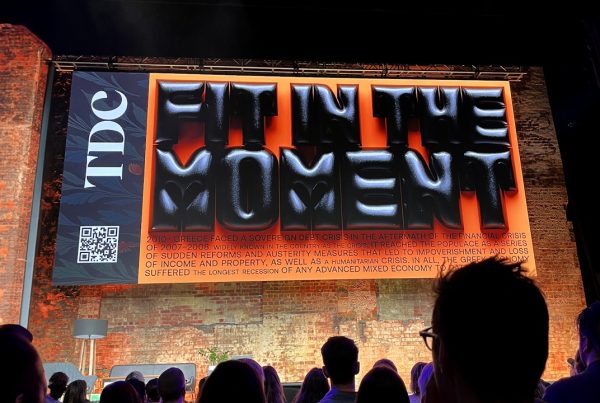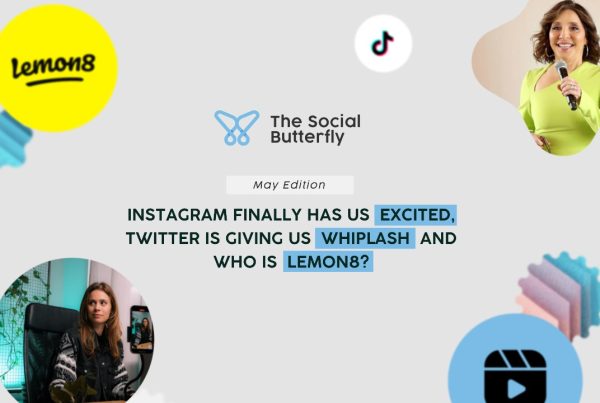
The benefits of using video in your content marketing are considerable. Google loves them, SEO expert Neil Patel says so and explains why in detail here. Social platforms (especially Facebook) favour them over nearly any other kind of content. And people are watching more video than ever.
But video for video’s sake is a pathway to wasted budgets and pain.
There has to be a purpose for your video content. And where you use it is important. Whether it’s right at the top of your customer journey in the awareness phase or what we call the ‘moment of inspiration’ – all the way through to the all-important loyalty loop.
There are many ways to use video across the customer journey to engage an audience, educate them in some way, or entertain them in a way that’ll stick, and brands are doing just that. Here’s just a few ways brands are using video at each stage of the customer journey.
The Moment of Inspiration (MOI)
MOI content is firmly about awareness in your customer journey. It’s often the first time someone comes across your brand. In general advertising speak, these are branding activities. The purpose is to present your brand to the audience in a way that is memorable. There’s no or minimal call to action, just a gentle “hey, this is who we are”.
An example of video content in the MOI stage of the customer journey is the epic video series by Australian aged care provider Feros Care. The brand created Fearless Films to collaborate with and showcase the surprisingly bold lives of seniors over the age of 75. The series sees the seniors star in a short film about their fearless lifestyles and receive a ‘Story Producer’ credit for helping to create their documentaries.
Feros Care says they wanted “to create a suite of films that challenge community attitudes and celebrate ageing.” From a strategic standpoint, I think this is a really creative and clever way of putting their brand in front of their audience. They would know that seniors are spending more and more time online (especially on Facebook) and are a highly engaged audience as well. So this is a way to showcase their brand purpose and mission in a way that entertains (and hits an emotional spot too).
The Trigger
I can’t talk about trigger content without mentioning the recent Wistia series for Soapbox Video. The campaign titled “1,10, 100” sought to prove whether the production value of video meant success in real terms (ie. reach and conversions) – all the while promoting their online video editing tool Soapbox.
The three videos, which were more or less explainer videos for Soapbox, were made with different budgets – $1000, $10,000, and $100,000. The Soapbox videos themselves are what work for trigger content.
They delved into the issues people face when they’re creating online video pitches, and they presented them in an entertaining, highly engaging way.
Side note: For Wistia, this was more of an MOI campaign as they took the data of the campaign and released the results to the public (in return for their emails of course).
Another brand killing at trigger content is Budget Direct. They have found your pain points and made super entertaining video content to bring them to your attention, just like they did with Captain Risky.
The most recent video campaign ‘Insurance Solved’ features Sarge – a super detective who delves through all sorts of strange crime scenes to uncover the real mystery of ‘why anyone would pay more for their insurance.’ It’s an out-of-the-box way of engaging people with real life pain points to trigger curiosity and research, and potentially a sale.
The Initial Consideration Set
By the time your audience gets to the initial consideration set they should already know who you are, they know they need to purchase from you or your competitors, and they’re now comparing you against other potential products/services that fit the bill.
An example of the type of video content that works here is the student stories and utility video content by Student One. The premium student accommodation provider in Brisbane has thought about all the different questions their customers could have and are using a mixture of student story/testimonial videos as well as other utility content to get them over the line.
Student One knows that its most powerful voice is that of its residents, so putting them in front of the camera in a way that is authentic is going to make a bigger impact then the brand itself saying “Buy now!”
They also use video at this stage to showcase their accommodation and unique locations in a way that’s easy to consume.
Accounting SaaS platform Xero also does initial consideration set video content well. The brand has an extensive library of customer testimonials that show the platform in action across a number of industries – and most importantly how happy their customers are for using it.
The Conversion
Videos at the conversion point of the customer journey are a bit hit and miss. You want your customer to make the decision as quickly as possible so whatever you say better get them over the line, otherwise it’s just going to put them off all together.
Things that could work here are testimonials of your work or proof points from advocates to show your capability to deliver on your promise. It can be done, but you had better do it well enough that a potential customer doesn’t just bounce out of there.
Post-Purchase and The Loyalty Loop
In traditional marketing funnels, once your customers had bought from you often they would fall out the bottom of the funnel, potentially never to be seen again. Marketers now know that for the most part, customers have a lifespan that can be lengthened. Keeping them engaged is much more cost effective than attracting new customers every time you want a sale.
And (surprise!) video can work at this stage of the customer journey, too. This is where a lot of brands use educational content or entertaining content to keep their customers coming back for more. Some examples of this are Xero’s video resource centre, Red Bull TV, Business Depot’s Blackboard Fridays videos (read more about this here) and All Birds’ Meet Your Shoes series.
The latter campaign was a fun video series that showcased the natural materials of the brand’s shoes. It follows the journey of person who seems to be driven or possessed by something as they travel day and night in search of… something. You’ll have to watch to find out.
The brand followed it up with some sweet outdoor advertising that, despite confusing most passer-bys, inspired their audience to go and watch the video.
So there you have it. Video content can be used at almost every stage of the customer journey. The question is where can you use it for your customers to attract them and keep them coming back for more?






